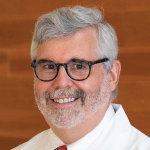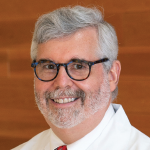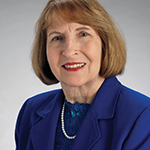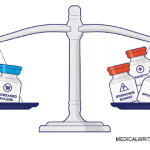
jiris / shutterstock.com
Rheumatologists who are outstanding clinicians, providing consistently exceptional care to patients and serving as role models for colleagues and trainees, are highlighted in our Lessons from a Master Clinician series. Here, we offer insights from clinicians who have achieved a level of distinction in the field of rheumatology.
Jonathan Kay, MD, is professor of medicine, population and quantitative health sciences, and holds the Timothy S. and Elaine L. Peterson Chair in Rheumatology at the University of Massachusetts Chan Medical School, Worcester, where he directs clinical research in the Division of Rheumatology and is associate director of the Medical Scientist Training Program-funded MD/PhD program.
In 2018, he received the Distinguished Service Award from the ACR, and he was awarded honorary EULAR membership. He is an ad hoc reviewer for many journals and a member of the editorial board of RMD Open. He was a member of the group that developed the 2010 ACR/EULAR diagnostic and classification criteria for rheumatoid arthritis.
Dr. Kay chaired the Rheumatology Working Group and was a member of the Internal Medicine and Musculoskeletal Topic Advisory Groups for the World Health Organization in its revision of the International Classification of Diseases-11. Dr. Kay lectures internationally and is the author of more than 250 publications and book chapters.
The Rheumatologist (TR): In your opinion, what makes for a master clinician?
Dr. Kay: A master clinician is a physician who possesses a broad fund of knowledge, an open mind and the ability to elicit symptoms and observe subtle physical findings that are applied to diagnose and treat patients with a wide variety of conditions. Importantly, master clinicians share their experience with others both by mentoring other clinicians and by contributing to the medical literature. Despite the breadth of their knowledge and experience, master clinicians must always remain students, learning from their patients and from other healthcare providers.
TR: What skills, habits or experiences have you found most helpful in finding the right diagnosis in medical mystery cases that heretofore had been unsolved?
Dr. Kay: When evaluating a patient, it is most important to listen to the patient describe their experience with illness. A patient’s choice of words when describing their symptoms and the order in which a patient prioritizes their concerns provide important clues to their diagnosis. When evaluating a patient whose native language is not English, it is helpful to be able to understand the language they speak, even though a medical interpreter may be assisting.
I always begin my encounter with a new patient by asking the question, “How can I help you?” The patient’s response to that question helps direct my line of inquiry. Information gained from the patient’s history contributes greatly to developing the differential diagnosis. The physical examination provides confirmatory evidence, which is further supported by laboratory testing and imaging.
No patient is a poor historian; patients describe their experience with illness to the best of their ability. A master clinician is skillful in eliciting an account of the patient’s experience, regardless of the patient’s proficiency with language.
In caring for patients, one must always keep an open mind and not allow preconceptions to limit diagnostic possibilities. Novel syndromes emerge and become apparent after several patients exhibit similar findings that don’t fit established diagnoses. I encountered this among patients with chronic kidney disease.
In the mid-1980s, many patients undergoing hemodialysis with bioincompatible cellulose-based membranes presented with shoulder periarthritis, carpal tunnel syndrome and hand flexor tenosynovitis; ultimately, this was found to be due to beta-2 microglobulin amyloid deposition.
In the early 2000s, many patients with chronic kidney disease presented with rapidly progressive and painful skin fibrosis that was determined to be caused by exposure to gadolinium-containing contrast agents during magnetic resonance imaging—a disease that is now known as nephrogenic systemic fibrosis.
Be curious, and take advantage of the opportunities offered by such situations to learn about new diseases and to develop novel approaches to their diagnosis and treatment.
TR: How do you approach the concept of uncertainty when entertaining a diagnosis for a patient?
Dr. Kay: When there is uncertainty about a diagnosis, I consider the several diagnostic possibilities that best fit the patient’s clinical presentation and choose a therapeutic approach that is common to those conditions. For example, a patient who presents with inflammatory polyarthritis, a low platelet count and a low titer of circulating anti-nuclear antibodies could have an overlap between systemic lupus erythematosus and rheumatoid arthritis, and may appropriately be started on hydroxychloroquine.
As Ron Anderson, MD, taught us during fellowship at the Brigham and Women’s Hospital, Boston: “Never label a patient until you are certain of the diagnosis.”
Always keep an open mind about a patient’s diagnosis because diseases evolve over time, and signs and symptoms may manifest that prompt revision of both the original diagnosis and the treatment plan. I once treated a patient for seronegative inflammatory polyarthritis as if he had rheumatoid arthritis. It was not until he developed Coombs-positive hemolytic anemia that I recognized his diagnosis to be that of systemic lupus erythematosus. By not labeling him as having rheumatoid arthritis, I kept open the possibility to consider other diagnoses as his clinical presentation evolved.
The most difficult concept that clinicians entering the subspecialty of rheumatology must master is how to become comfortable with uncertainty, something that is not routinely taught in medical training.
TR: Who were some of your clinician role models and what qualities did you admire in these individuals?
Dr. Kay: Ronald Anderson, MD—Ron was the fellowship program director at the Brigham and Women’s Hospital, where I trained in rheumatology. He is a very wise and skillful clinician who shared his experience with the fellows he trained. To this day, I remember his words about different diseases and clinical circumstances when I encounter them in my clinical practice.
Norman Kattwinkel, MD—Norm was my colleague at the Lahey Clinic in Burlington, Mass., where I practiced for a decade after finishing my rheumatology clinical training and postdoctoral fellowship in the laboratory. He emphasized the importance of always focusing on the patient as a person and directing all our efforts toward best serving our patients.
Leonard Calabrese, DO—Len was instrumental in mentoring me and involving me in the educational leadership of the ACR. He is a brilliant clinician with an extensive fund of knowledge and experience in caring for patients with complex, multi-system diseases. He thinks clearly and shares his wisdom generously with others.
Neal Birnbaum, MD—Neal is the epitome of equanimity. He is an outstanding physician who has practiced rheumatology in San Francisco for decades and has served American rheumatology as a leader. He is a role model for me as a clinician.
Stanley Cohen, MD—Stan is a superb clinician who is extremely knowledgeable about clinical therapeutics and has had an illustrious career as a clinical trialist. I turn to Stan for advice about treating patients. He has mentored me and has helped to advance my career in clinical research.
Michael Weisman, MD—Michael is a distinguished rheumatologist and clinical investigator who has been influential in all aspects of rheumatology. He is a good friend who has been very generous in sharing opportunities for academic activities and providing thoughtful guidance and counsel about many topics, both professional and personal. Michael is a mentor to many rheumatologists, both those who are younger and those whose careers are mature.
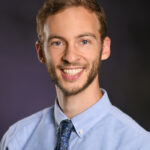 Jason Liebowitz, MD, completed his fellowship in rheumatology at Johns Hopkins University, Baltimore, where he also earned his medical degree. He is currently in practice with Skylands Medical Group, N.J.
Jason Liebowitz, MD, completed his fellowship in rheumatology at Johns Hopkins University, Baltimore, where he also earned his medical degree. He is currently in practice with Skylands Medical Group, N.J.
